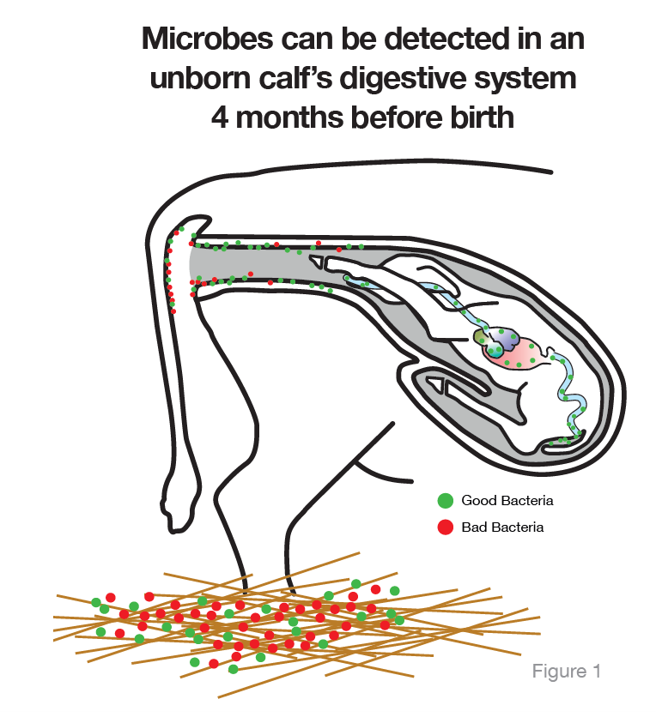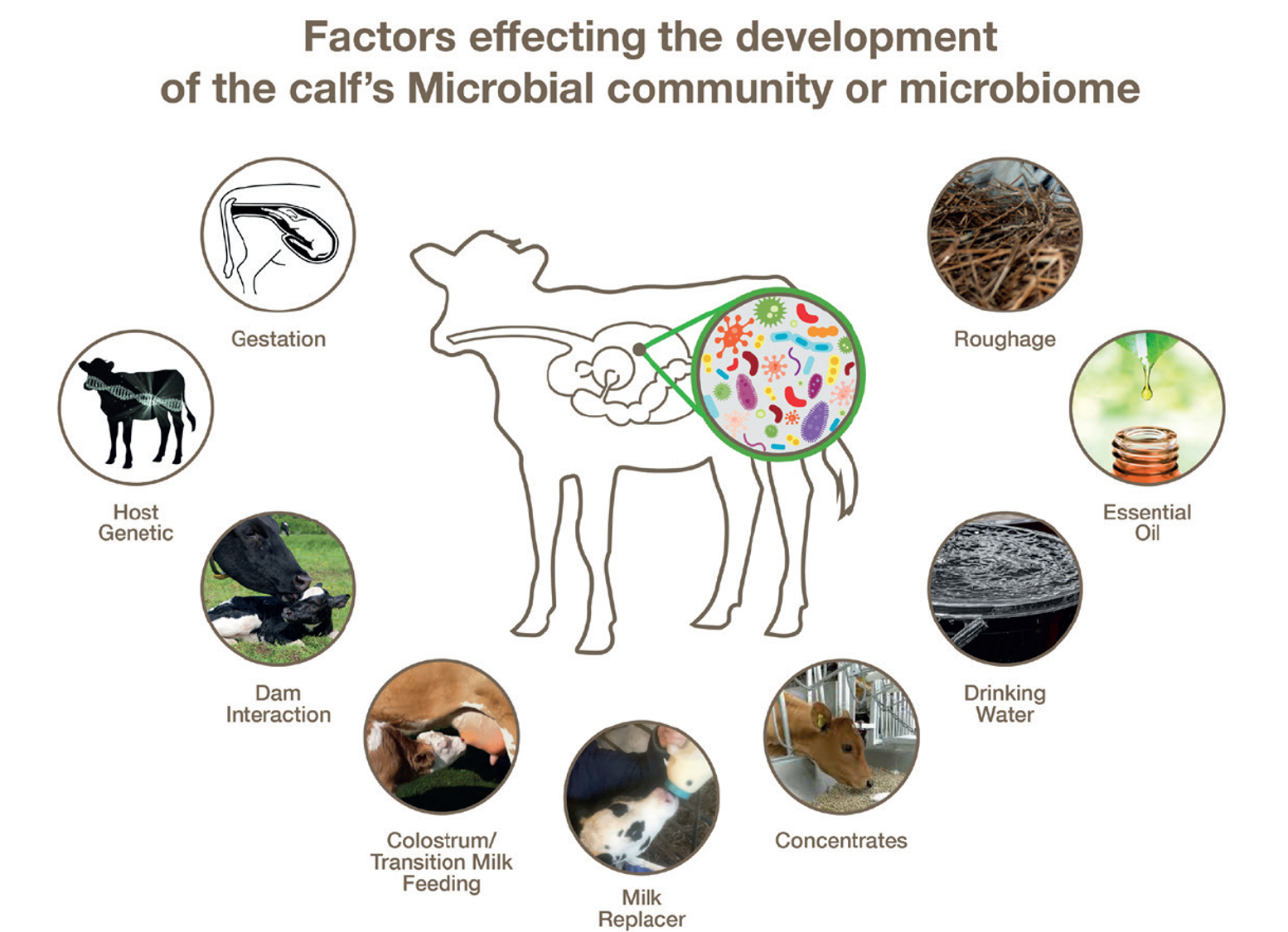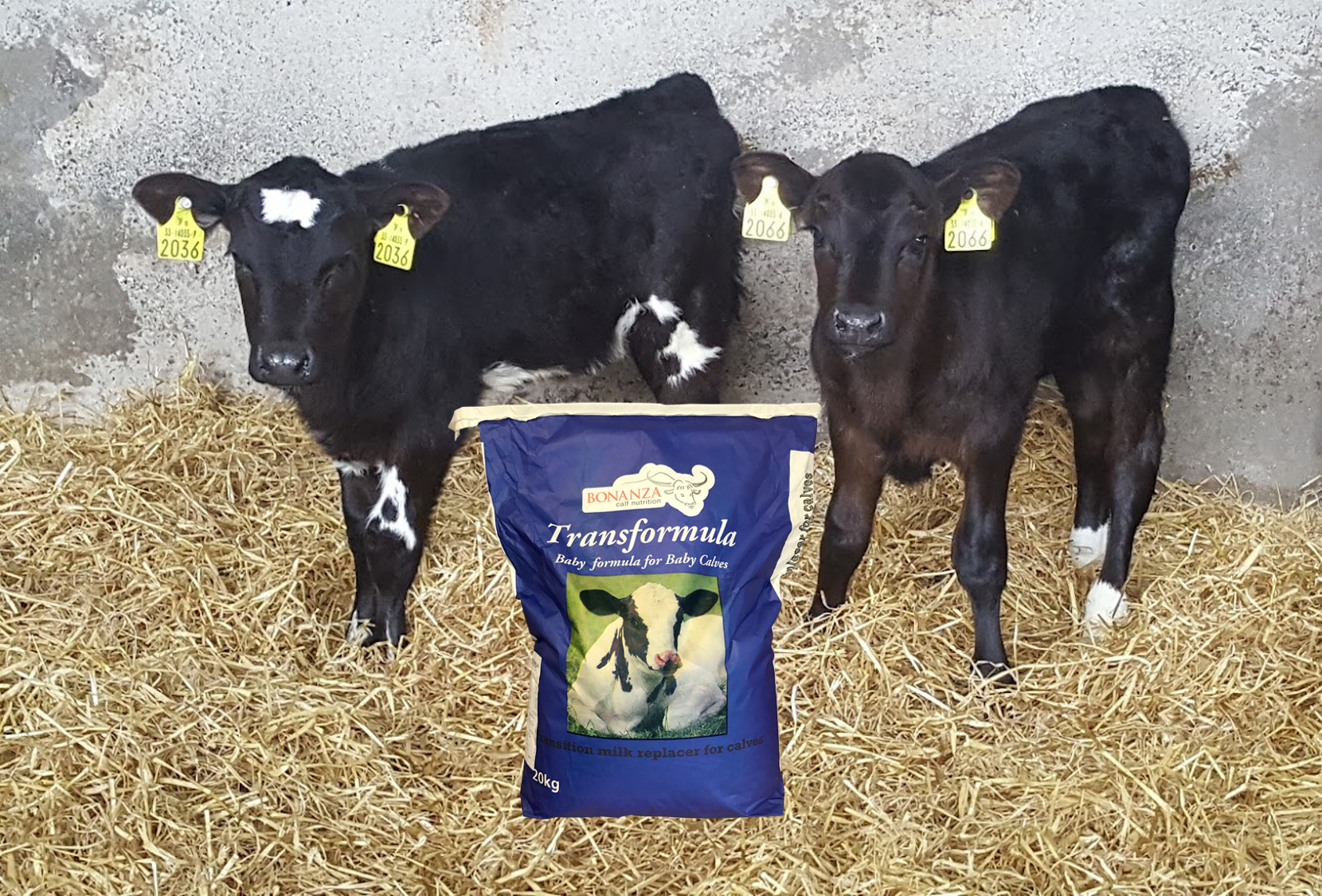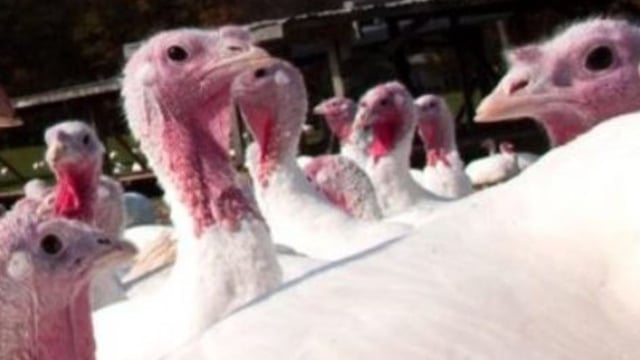Sponsored Article
Aiding calf microbiome and avoiding health risks from transition milk
Sponsored Article

New research is emerging on the critical role of the microbiome in a calf’s lifetime performance, and the essential part that transition milk plays in that.
This shows that supporting the functioning of the microbiome at a much earlier age than many calf rearers might believe is essential.
Microbes in the lower gut are key to a calf’s long-term health, immunity and production efficiency, said Dr. Christine Cummins, of Bonanza Calf Nutrition.
It is therefore vital to get the gut off to a good start, she said.
The microbiome
The microbiome can be made up of more than 900 different types of microbes, producing tens of thousands of enzymes, essential fatty acids, vitamins and hormones that support the efficient functioning of a healthy calf as it grows and matures.
“Historically, when we talked about microbes, we considered rumen development and weaning, and while this is a key milestone for calves, we need to rewind to also concern ourselves with the very start of life,’’ said Dr. Cummins.
The microbial community found in the calf can be detected long before it is born. This microbiome is influenced by a range of factors, including genetics, the calving process and the milk feed in the first days’ of life.
As the calf enters the birth canal it becomes exposed to pathogens - bad microbes - and this is where hygiene and nutrition play such a key role in determining if good or bad bugs dominate.
The microbial community must therefore be built up with beneficial bacteria as early and as quickly as possible, said Dr. Cummins.
“The way we do this is the appropriate management and feeding of good, clean colostrum and transition milk," she added.
Colostrum and transition milk
Colostrum and transition milk contain an abundance of good bacteria, such as bifidobacterial and lactobacillus.
This is an excellent start to populating the gut with beneficial bacteria that can get to work on developing digestion and immunity by helping to breakdown and absorb nutrients and to fend off pathogens.
A further benefit of colostrum and transition milk is that they contain an abundance of prebiotics.
These include oligosaccharides - prebiotic compounds that promote the growth of beneficial bacteria and help prevent pathogenic bacteria binding to the calf’s intestinal lining.
They also encourage cell recognition and binding, promoting the physical closing of the intestinal lining and providing protection from pathogens.
Dr. Cummins said the gut needs to develop both physically and microbially.
It is not sufficient to only provide the calf with colostrum or transition milk for the first day or two - continued feeding of transition milk, often referred to as ‘biestings’ or ‘new milk’, is essential to provide sufficient protection for the calf, Dr. Cummins insisted.
However, many milk producers find themselves in a dilemma on whether to feed this or not.
“The answer is definitely not to feed,’’ advised Dr. Cummins.
When milk containing antibiotics is fed, the negative effects typically only become apparent after feeding.
Farmers therefore rarely make the connection between the feeding of antibiotic milk and health issues, such as the breakdown of the gut or an animal succumbing to disease; reduced efficiency of the gut, growth potential not being maximised in the weeks after this milk has been fed or a poor response to antibiotics in the event of a bacterial illness are other factors that could result from feeding.
There are also diseases, such as Johne’s and Mycoplasma, which can be spread through milk.
Yet a calf in the first days’ of life needs the bioactive ingredients in transition milk to help protect it and set it up for maximum growth potential ahead.
An alternative without the health challenges is to feed a transition milk replacer which contains the ingredients necessary to provide the calf with energy and aid gut development and immunity.
Transformula
Transformula is a ground-breaking transition milk, in fact the first of its kind designed specifically with the needs of the calf’s gut development in mind.
It contains oligosaccharides and also polyphenols, antibodies, pasteurised and low heat-treated protein ingredients and short chain fatty acids, which all combine to ensure a calf can utilise the energy and protein in the powder.
Research has shown how specific bovine oligosaccharides, such as that included in Transformula, can block the binding of enterotoxigenic E. coli and are effective against rotavirus.
The inclusion of oligosaccharides in Transformula has a positive effect on the calf’s gut microbiota and it plays a major role in the establishment of the immune system of the young calf, said Dr. Cummins.
“With Transformula, a calf gets the start in life that it needs without the risks of collected whole transition milk, because it maximises the colonisation of good microbes," she added.
"This also helps lower incidence of diseases that require treatment with antibiotics which wipe out the microbiome and reduce the efficiency of the gut and its recovery.’’
To find your nearest Transformula stockist, click here.
Sponsored Article








